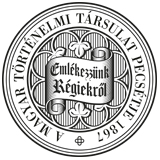Századok – 2013
A MAGYAR TÖRTÉNELMI TÁRSULAT 2012. ÉVI VÁNDORGYŰLÉSE - Baráth Magdolna: Célkeresztben az 56-os magyar emigráció VI/1497
1511 figyelemmel kísérjük, de a kompromittálásnak gyakorlati előkészítését egyelőre nem tartjuk időszerűnek.”68 A nyugati magyar emigráció egységét sem az 1956-os forradalom után, sem később nem sikerült megteremteni. Mindez azonban korántsem az állambiztonsági szervek sikeres működésének volt köszönhető. Az egyes emigrációs csoportok és vezetők között egyfelől olyan nagyok voltak a politikai nézetkülönbségek, hogy lehetetlen volt kompromisszumra jutniuk, másfelől a Kádár-rendszer konszolidációjával párhuzamosan fokozatosan csökkent az emigráció „politikai felhasználhatóságának” lehetősége, eloszlott körülöttük a „szabadságharcos” nimbusz, ami erősítette a bomlási folyamatot. Amikor a Politikai Bizottság 1963. május 14-ei ülésén értékelte az emigrációról hozott 1961. júniusi határozata végrehajtását, úgy ítélték meg, hogy erősödött a Magyarország iránt lojális vagy nem ellenséges emigránsok tábora, és a Magyarországhoz való viszonyukban is jelentős változások mentek végbe. Miután az ún. magyar kérdés lekerült az ENSZ napirendjéről, az „ellenséges emigráció” fokozatosan kikerült a hazai politikai és belügyi szervek érdeklődésének középpontjából. IN THE CROSS-HAIRS: THE 56’ HUNGARIAN EMIGRATION by Magdolna Baráth (Abstract) The appearance in the West of „dissidents” who left Hungary during and after the Revolution of 1456 posed a considerable challenge both for the so-called „old emigration” and for the Hungarian political leadership. Whereas the former tried, mostly without success, to integrate the newcomers into the already existing structures, the political leadership, regarding them as dangerous enemies, wanted to prevent the „old” and „new” emigration from merging into a unified organisation. The present study focusses on the means and methods the different organs of Hungarian state security applied in order to obstruct the establishment of a common organisation which would have included the representatives of all the various groups within the emigration. It illustrates through a couple of examples the discrediting campaigns launched against the leaders of the 1956 emigrees, and pays special attention to the actions taken against those emigrees who appeared as witnesses before the UN committee of five in the so-called „Hungarian question”. Yet the establishment of a united emigration organisation finally shipwrecked not because the Hungarian state security deployed its full arsenal in order to attain this goal, but because political conflicts between the individual groups within the emigration proved unsurmountable. CÉLKERESZTBEN AZ 56-OS MAGYAR EMIGRÁCIÓ 68 ÁBTL 3.2.4 K-1469 Kővágó József ügye. 1961. február 13.
